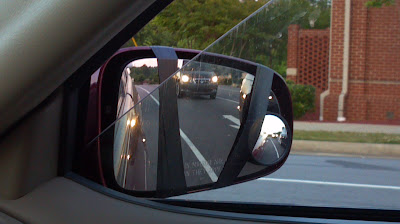When you think of a zoo (I'm lumping all non-zoo types of facilities in this as well. Think of any place that has a variety of animals), what animals do you think of?
Lions. Tigers. Giraffes. Zebras. Polar bears. Wolves.
Am I right?
When you bring a child to the zoo, the child will most often be thrilled to see these animals and little of anything else.
Rochester folks: Did you know that Seneca Park Zoo has Madagascar hissing cockroaches? How about the Lake Sturgeon?
North Carolina folks: Did you know that the North Carolina Zoo is home to several types of frogs, turtles and spiders?
California folks: Are you aware that the San Diego zoo is home to not only pandas but kingsnakes?
Philadelphia folks: Did you realize that your local zoo has Victoria crowned pigeons?
Should I continue?
In the conference room of the building at the Conservators' Center, there is a plaque thanking the donors who helped make the building happen. This particular plaque has a quote that says, "In the end we will conserve only what we love." It was written by Baba Dioum, an environmentalist.
This is the full quotation:
This saddens me, but not because the plaque is in a place like the Conservators' Center. This is saddening because it is true.
“In the end we will conserve only what we love. We will love only what we understand. We will understand only what we are taught.”
The purpose of zoos today seems to aim to entertain. While living conditions for the animals have gotten vastly better (there is a picture floating around somewhere of a polar bear living in a very small enclosure at Seneca Park Zoo back in the 1960s), and there are educational signs in front of every exhibit, it seems to me that people still go to watch the animals and not really learn about them.
Let me illustrate.
During my internship at SPZ, I was hanging out on my break with an interpreter. We were sitting at a dining area near the wolves. My interpreter turns to me with wide eyes and says, "You see that woman?" There was a woman with two children looking at the wolves. Apparently, the interpreter overheard her telling her children, quite seriously, that the wolves were mean and she could hear their thoughts. They were supposedly devising of ways to break out of their exhibit and eating the children.
Oh my...
Another day, I was cleaning the reef tank. There is a gorgeous 560 gallon reef aquarium between the sea lions and the polar bears. Interns and keepers can typically stick their arms in the tank and use a paint scraping tool to scrape the algae off the glass. The fish really don't care because they know that soon after the arms are removed, food appears. This is a beautiful aquarium, and the reefs are more than alive. They look like they are moving, teeming with life.
Throughout this, not a single person came over to look at the fish. Not one. They entered, went to watch the sea lions frolicking, moved over to see the polar bears (if they were in the water/visible), then left. The tank was between the two doors via which they could enter and exit. When I asked the keeper, she said it was typical. The only times visitors showed interest in the fish was when they were being fed.
When you visit a zoo, there is always a gaggle of people surrounding the popular exhibits, but almost none in the nocturnal areas or lesser-known animals.
My fears. I have a fear that one day, these less-popular animals will die out in the wild and within the zoos and sanctuaries, and as a consequence the ecosystems will collapse, leading to a far more conspicuous mass extinction than the one going on right now.
My plea to you, dear reader, is to visit a zoo and learn about each animal there. Learn what they're like in the wild, and what they need to survive. All the resources are there in front of the exhibit. Please, just look.
I'll repeat it again. It's worth reading.
“In the end we will conserve only what we love. We will love only what we understand. We will understand only what we are taught.”

























